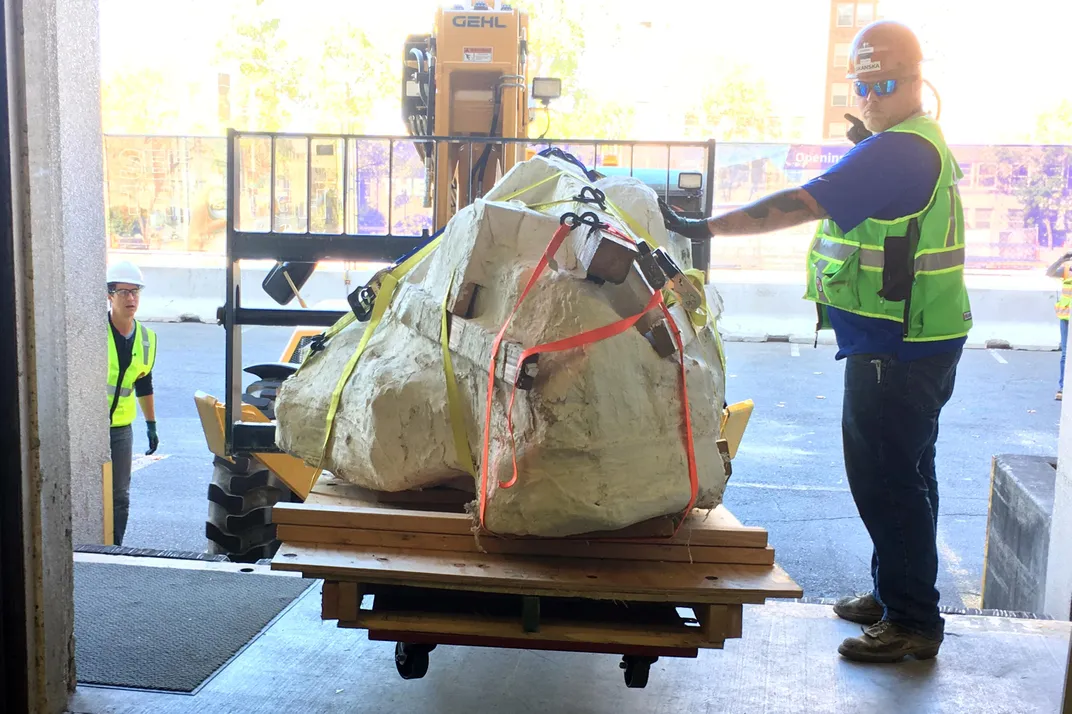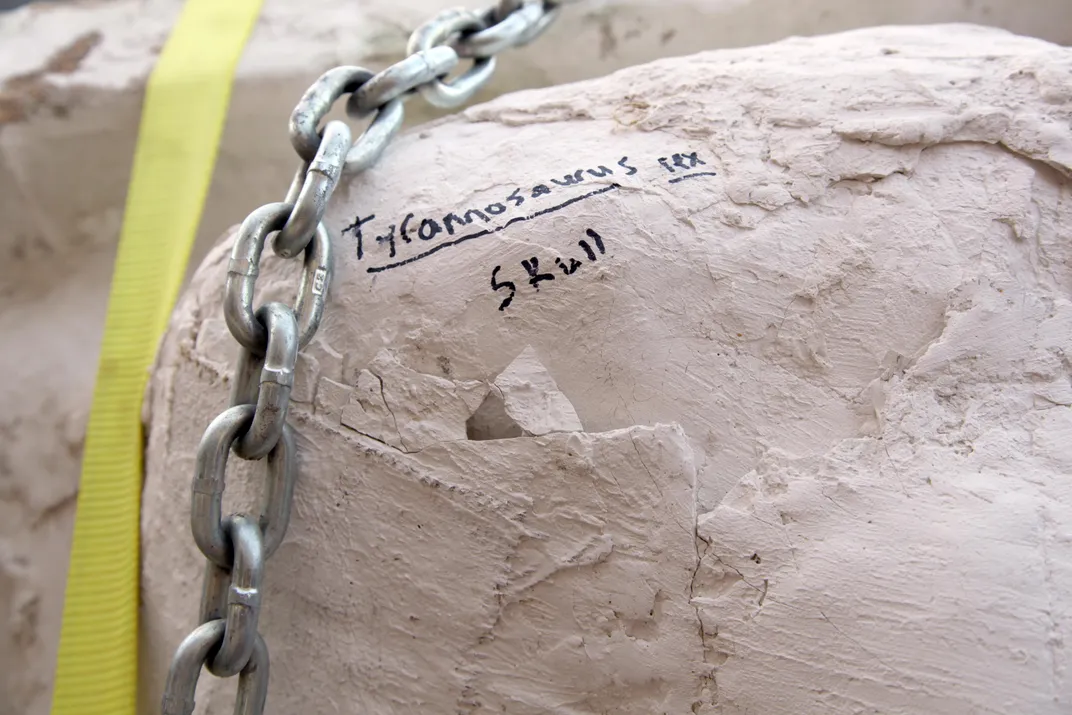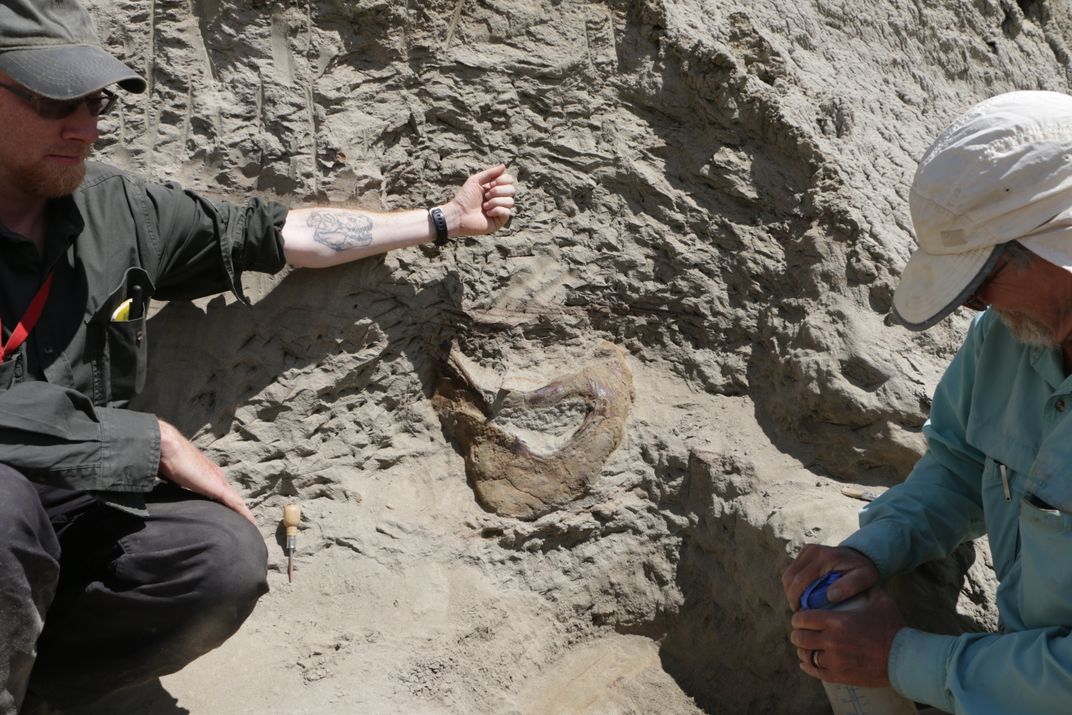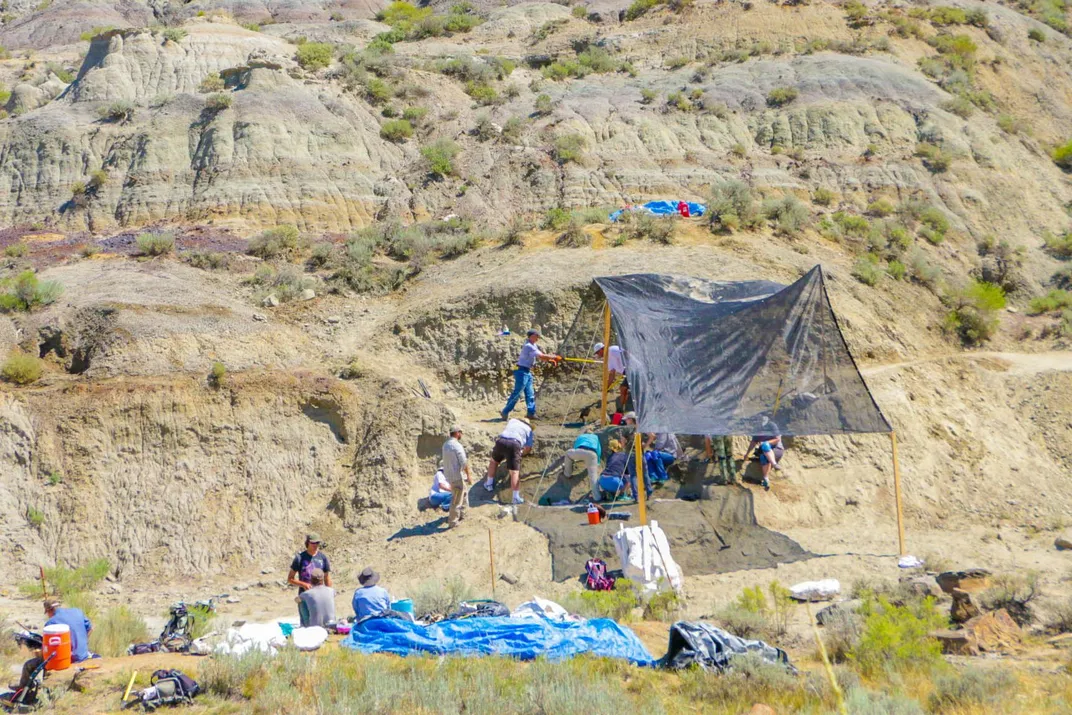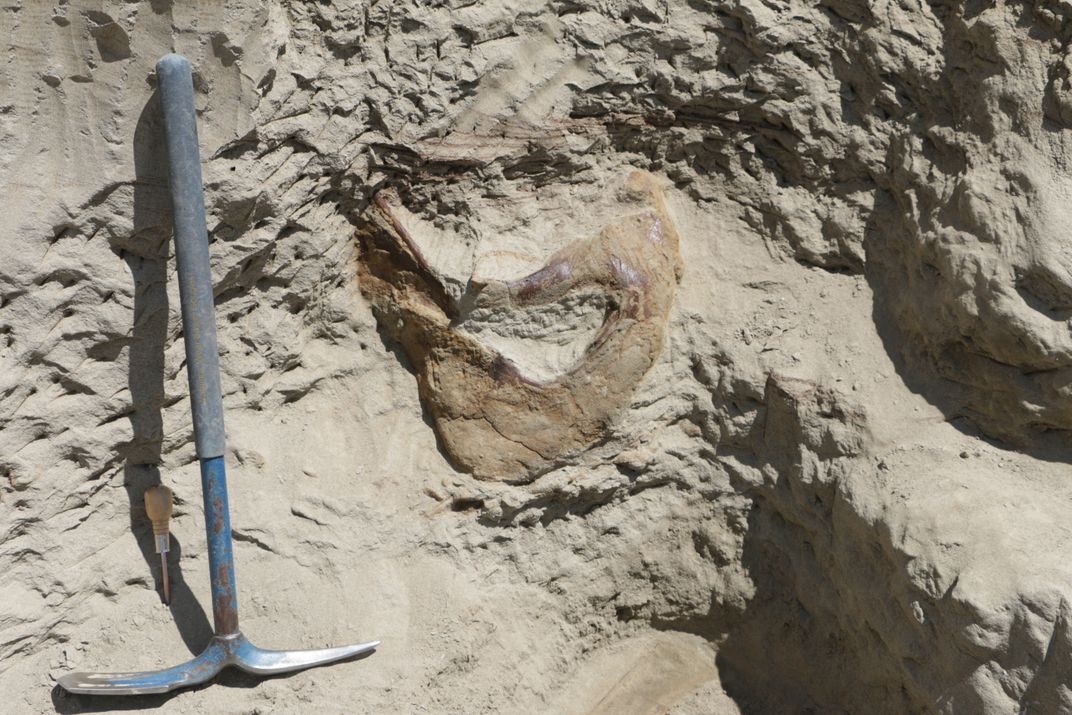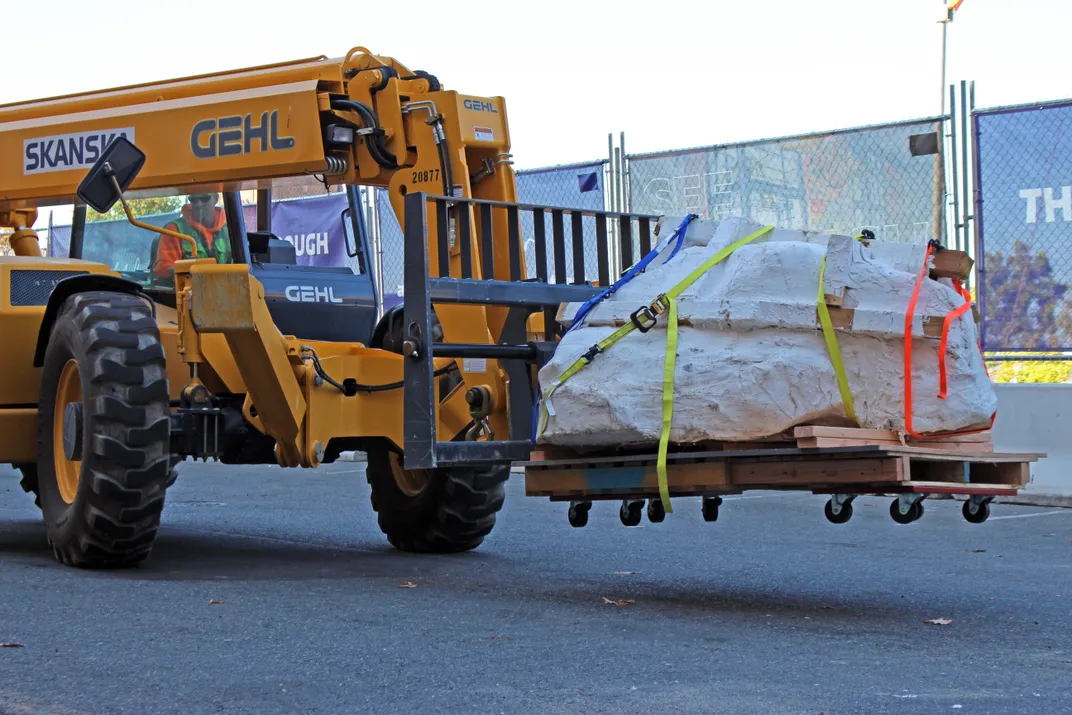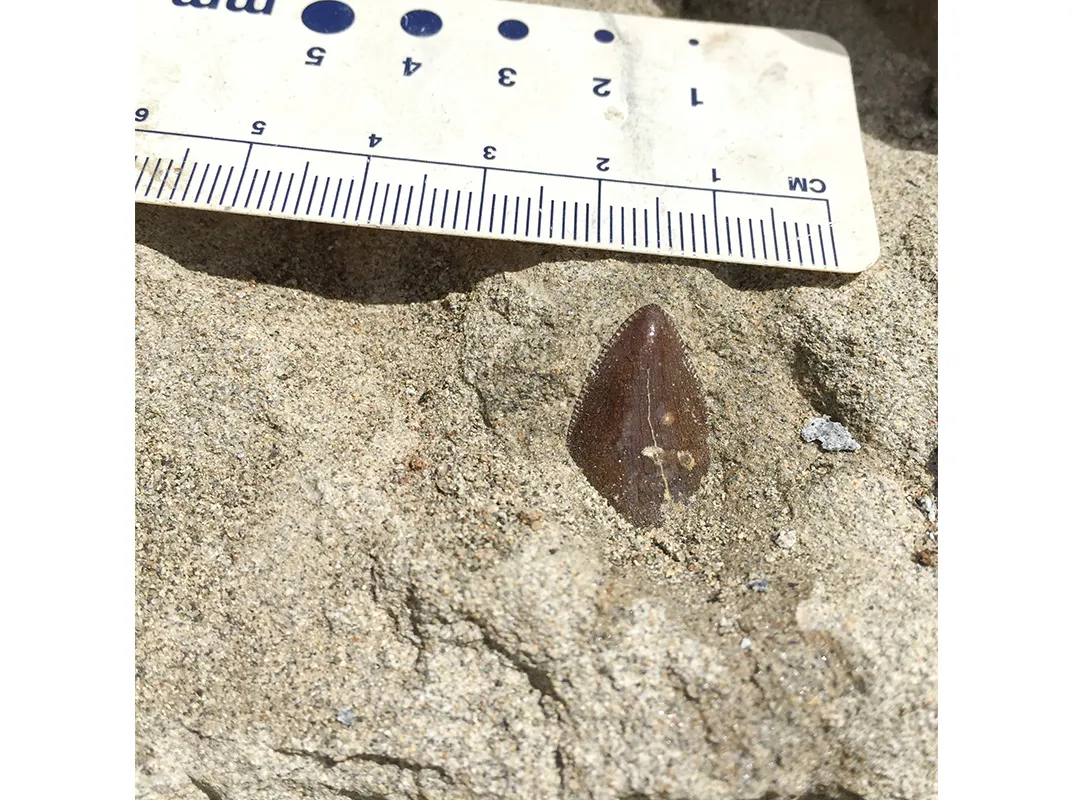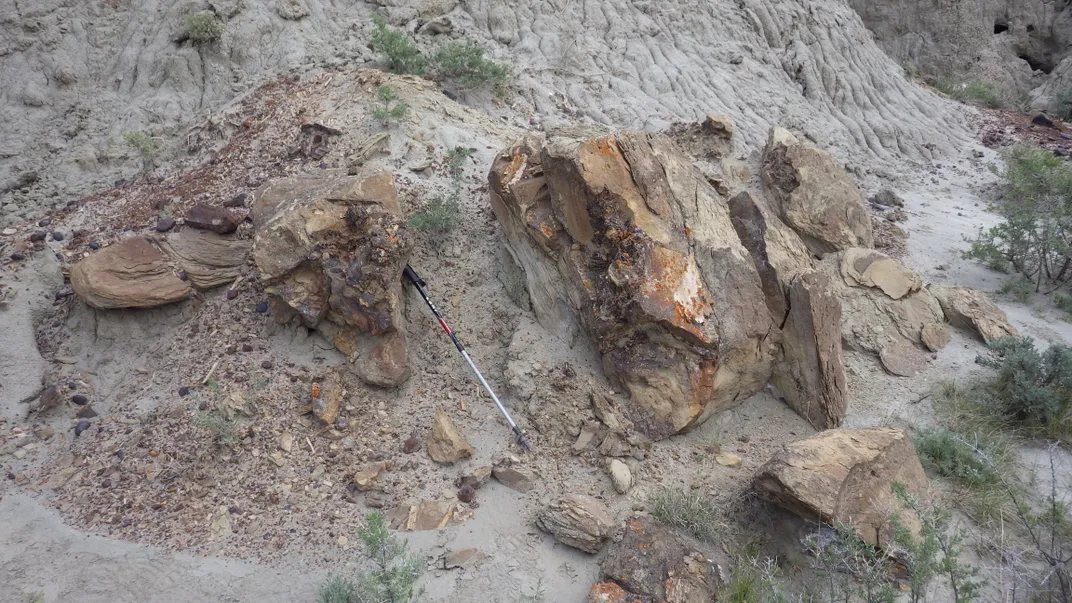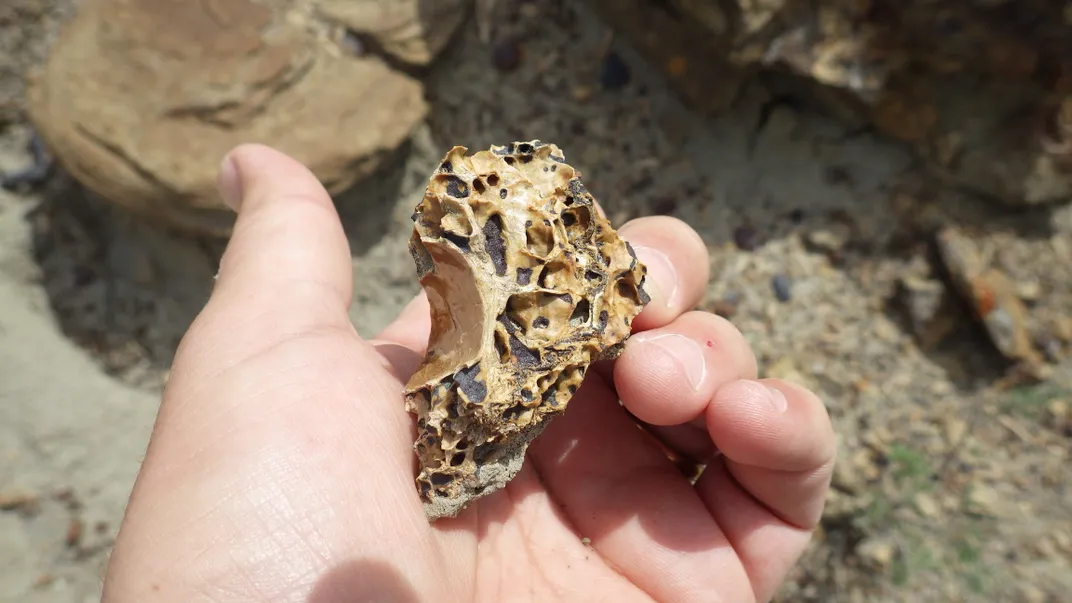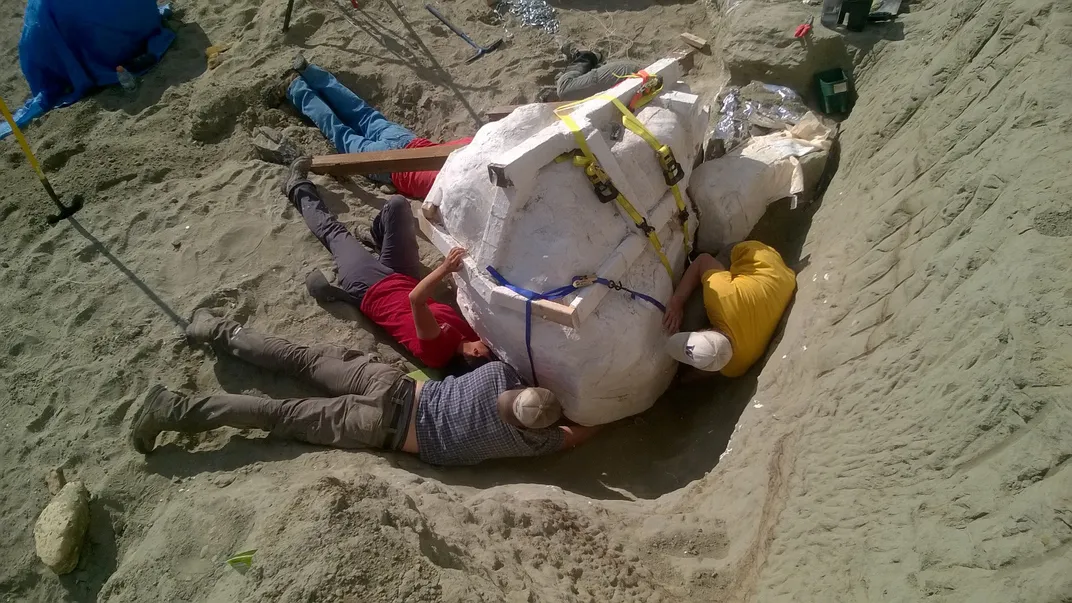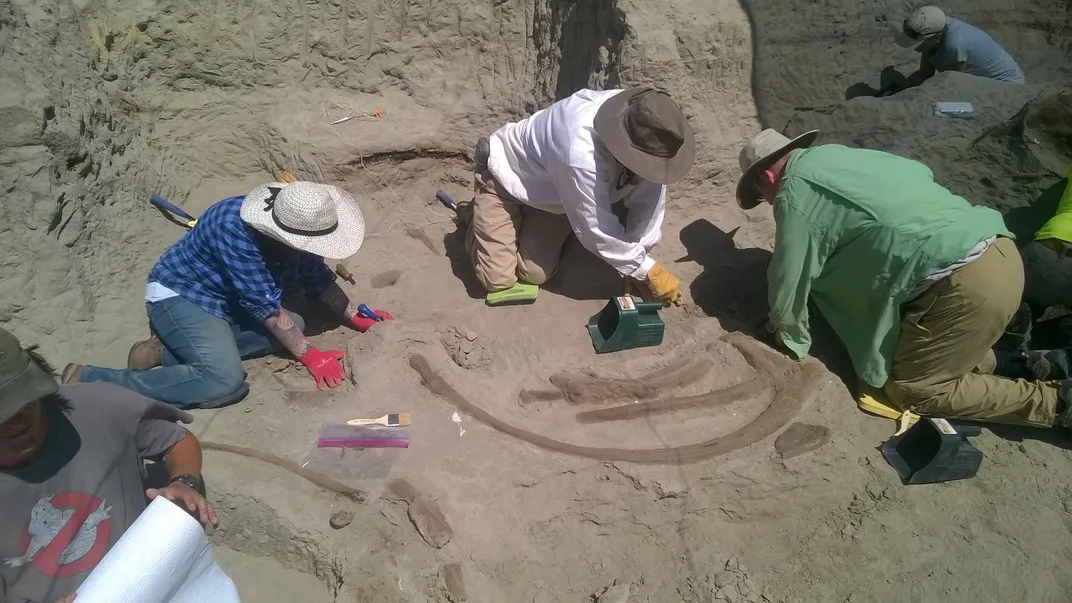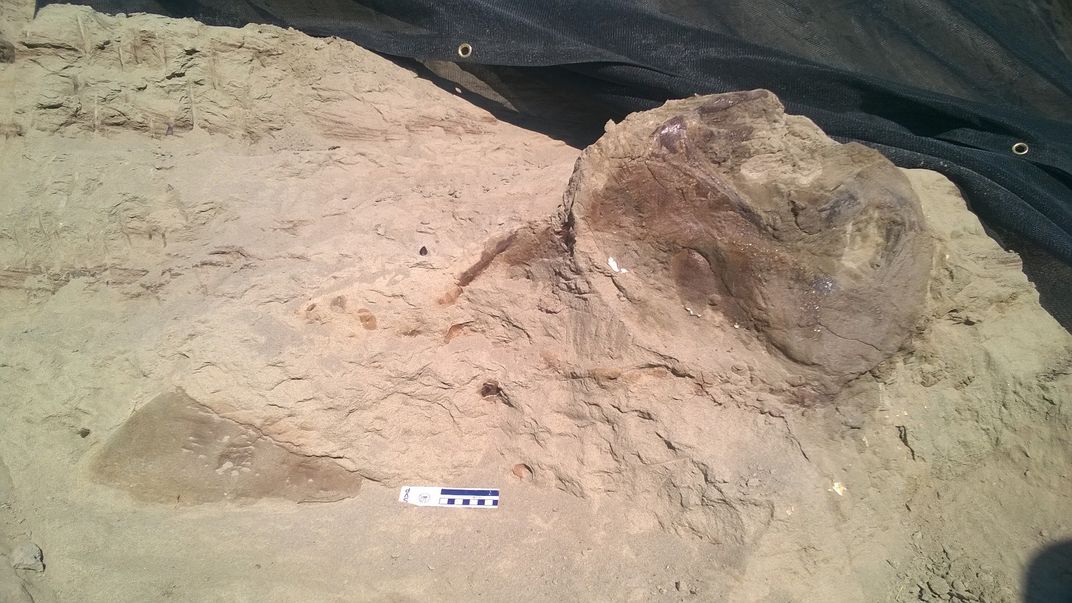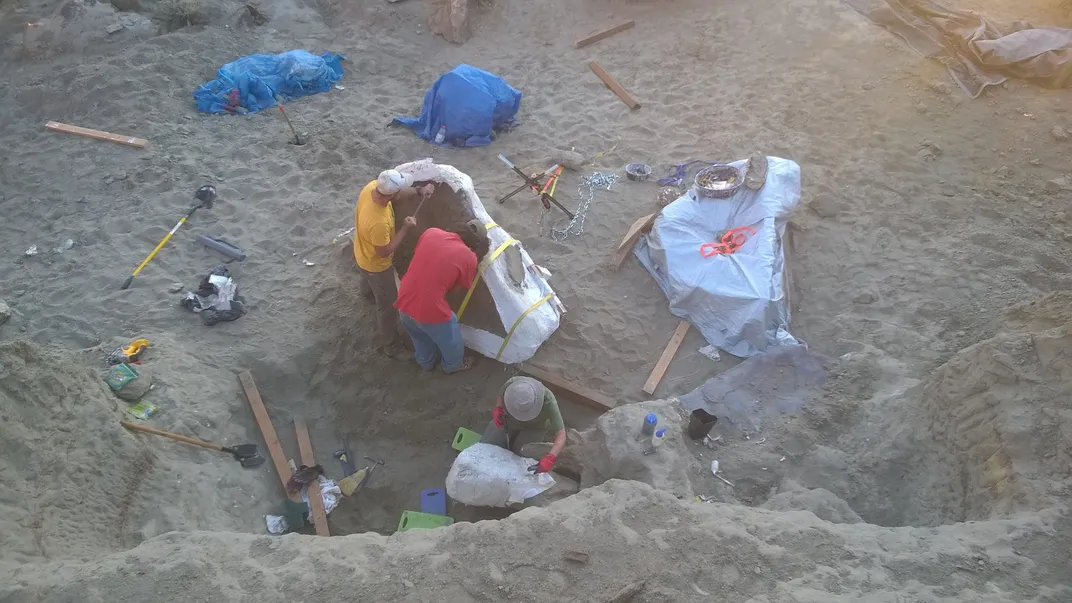Rare Complete T. Rex Skull Found in Montana
The “Tufts-Love skull” will be cleaned and put on display at the Burke Museum of Natural History and Culture
In 2015, two volunteers from the Burke Museum at the University of Washington were on an excursion to Montana’s Hell Creek. On the last day of their week-long trip, Jason Love and Luke Tufts noticed bones sticking out of a hillside. Big bones.
“It just looked how we’d been told that bones from a big predatory dinosaur like a T. rex looks,” Love tells Vernal Coleman at The Seattle Times. The duo contacted paleontologist Gregory Wilson about the find, who later confirmed what Love suspected: They found a Tyrannosaurus rex.
Over the next year, a group from the Burke Museum excavated the bones of the ancient creature. The team recovered a complete skull along with vertebrae, ribs, hips and the lower jaw bone, about 20 percent of the fierce dino, according to a press release. Wilson says he believes more of the creature still remains in the hillside and plans to begin excavations again next year to search for more bones.
Over the last week, researchers trucked the skull, still encased in dirt and a protective layer of plaster from Montana to the Burke Museum, where it is on temporary display until researchers begin the cleaning process. The skull is four feet long and currently weighs 2,500 pounds, though it will shed much of that weight as the dirt and plaster are removed. The skull will allow the researchers to determine the power of the dino’s jaws, its eating habits and may even point to a cause of death, reports Coleman.
According to the press release, the researchers believe Tufts-Love is about 66.3 million years old, living just before the mass extinction event at the end of Cretaceous period that pushed dinosaurs into a steep decline. Based on the size of the skull, the paleontologists estimate the dino was about 15 years old when it passed, a decade short of the 25 to 30 year average lifespan for the species. It was probably 40 feet long and 20 feet tall.
“Having seen the ‘Tufts-Love Rex’ during its excavation I can attest to the fact that it is definitely one of the most significant specimens yet found, and because of its size, is sure to yield important information about the growth and possible eating habits of these magnificent animals,” Jack Horner, a paleontology luminary and a research associate at the Burke, says in the press release.
Despite its worldwide fame, T. rex specimens are rare. The Tufts-Love skull is only one of 15 more-or-less complete skulls ever discovered. Researchers have found 11 T. rex specimens in the Hell Creek area alone, the most of any location in the world. T. rex bones can be big business as well. The best preserved T. rex ever recovered, named Sue, was found on the Cheyenne River Reservation in South Dakota in 1990. Those remains were sold to the Field Museum for $7.5 million. The Burke Museum already owns the rights to the newly discovered dino.
The Tufts-Love skull in its plaster casing will remain on display at the museum until October 2. The cleaned skull will officially go on display when the Burke Museum moves to a new building in 2019.
